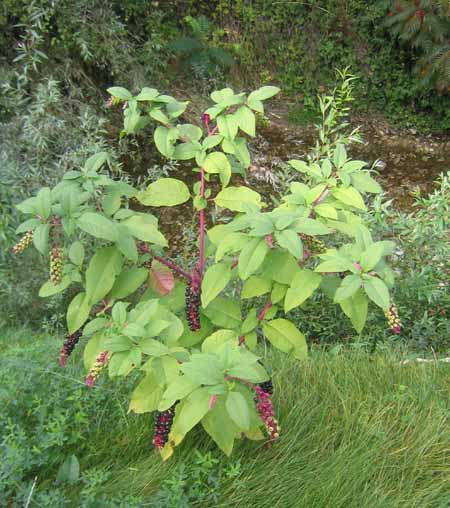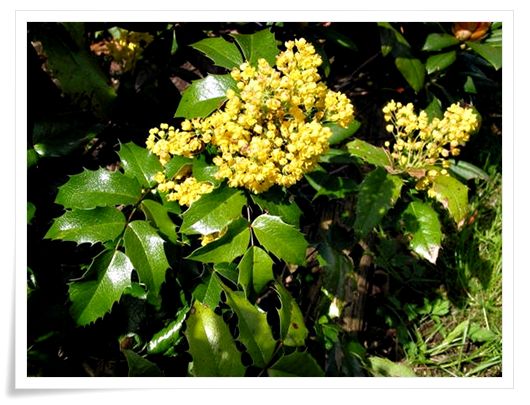Interested in learning more about invasive plants? Check out the weed workshop we’re hosting, put on by the East Multnomah Soil and Water Conservation District!
Pokeweed (Phytolacca americana)
Characteristics: American pokeweed is a large, smooth, branching herb from a substantial perennial rootstock, with green, red, or purple stems usually reaching about 4-6 feet (1.3-2 m), occasionally as tall as 10 ft (3 m). Leaves are alternate and simple, up to 9 in (3.5 cm) long; flowers are white, on a long stem, more or less erect, roughly 0.2 in (0.5 cm) across. The fruit is a dark purple pome, found in bunches which cause the stem to droop, ripening in early fall. Note: Poisonous! All parts of the plant are toxic to humans and other animals when raw. This is especially dangerous for children, who are attracted to the fruit (and, being small, are much more susceptible to its effects).
Spread: Pokeweed spreads mostly through seeds, which are distributed by birds feeding on the fruits. Let’s be honest: this plant is strikingly pretty, with its deep-purple fruit clusters, glossy green leaves, and reddish stems. It’s like a rainbow planted itself. This has led a lot of unsuspecting folks to let it go in their yards (hey! Free rainbow plant!). As a result, this Eastern US native is becoming broadly distributed in fields and natural areas—as well as yards—in the Pacific northwest. Long seed life (some estimates are as high as 40 years in soil!) means that a little time spent controlling it now will prevent much more effort later. Improper attempts at removal may also help it spread (see below).
Control: Young plants/seedlings can be pulled up by hand—wear gloves, as the sap from this plant can cause skin rashes for some people. More established plants must be carefully dug up, being sure to get all of the large taproot and attached rootlets (which will otherwise resprout). It is best to lay the plant in the sun to dry out completely before disposing of it—definitely don’t put it in compost before it’s completely dead.
Native Replacement: Tall Oregon grape (Mahonia aquifolium) is a drought-tolerant, native shrub with striking, dark-green foliage that turns reddish late in the growing season. It produces clusters of bright yellow flowers in late spring, followed by bluish-purple berries in summer.


